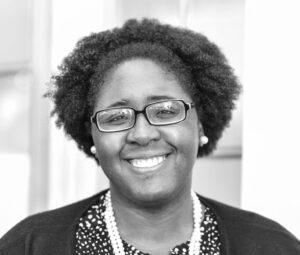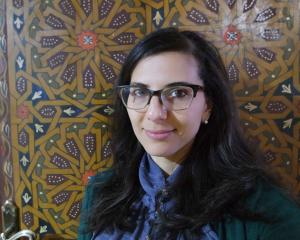Resources

What Listening is NotIt will be obvious to some and painfully invisible to others, but it will lurk in quiet corners of the classroom. And it will grow and stretch and plant roots in many imaginations as being OK. Only some in the classroom will feel the discomfort and stagnation of its growing presence. Only some will notice this phenomenon hardening and forming a new wall that the privileged will be able to hide behind, marking it as their limit, as the end point of their journeys.Though teachers want growth in the classroom, I am not sure we want this type of growth; for this growth mislabels itself. It calls itself progress and progressiveness. It calls itself a sign of maturation and evolving, while what is actually unfolding is quite damaging.Listening as a practice of anti-racism or subverting one’s privilege, especially by white students (though this applies to all students with privilege), breeds a pernicious dynamic in the classroom – one of silence and thus of nonaccountability. It unfortunately encourages concealment. Students can take up a posture of “listening” to avoid the risk of addressing problems as they happen in the classroom.But listening is not silence.Silence is foe. It is not allyship. Silence dressed in the discourse of listening is clever avoidance. True listening is not stagnant; she is always active. She is not perpetually quiet. She emerges and course-corrects and grows into the right stance and posture. Listening is not a means of tapping out of the difficulty of a moment in the guise of passivity; it is to commit to addressing the awkward moments in the classroom in real time. It is a covenant to deal with difficulty.In its true form listening is quite loud.Silence has paraded around as listening too many times in progressive classrooms – and in the process it has harmed more moments and students than it has helped. There are No Silent ExemplarsIf change requires shift and movement, it is safe to assume that correction must be voiced. The right thing to do then, requires making a sound.Because of listening’s misinterpretation, the classroom can be a case study in how opportunities for change are missed. And these missed opportunities become cyclical.It is all too commonplace that a Black student’s white colleague consistently says the right thing about justice, oppression, racism, sexism, queerphobia, and so forth, when the intellectual moment presents itself in class. For the minoritized/marginalized student there is hope! The possibility that this classmate “gets it” first announces itself.But then something devastating happens. Another colleague or – if we are completely honest – sometimes the teacher, does not respond or react if something offensive, disturbing, biased, incorrect, assumptive, ignorant, or somewhat “off” is said or happens. People who are in the impacted group feel it. They feel compelled to correct the error. But they are also tired of defending themselves. They become apathetic, for they know this moment all too well. The silence is awkward; it is not productive but feels deeply regressive.But most importantly, it hurts. And the hurt grows. And grows.With each second that the articulate colleague or teacher allows to pass where the offense is not met with a pedagogical corrective, the wound burrows deeper, cementing itself in memory of the wounded: they will remember this the next time they have hope for those who boast the appearance of understanding in the guise of intellect. Listening as Weaponized IncompetenceWeaponized incompetence is not only a domestic dynamic. The push for majority students to “listen” to their minoritized peers in educational spaces has cleverly become the newest iteration of weaponized incompetence.Listening as a passive, benevolent act can do tremendous work for the moral appearance of change, transformation, and/or righteousness. The majority benefits from it while continuing to inflict harm on the minoritized persons in the learning space.Hearing transgressions and violations against another’s humanity, history, culture, aesthetic, tongue, way of life, or knowing, and settling into silence and inaction is not true listening.Listening must be redefined as practice oriented. It requires immediate and factual correction in and of moments where the incorrect narrative, perception, or action has been directed towards another. Listening demands activity; it means amending the error in real time no matter how challenging the moment.But the elephant in the room of this dilemma must be addressed: it is not only white students and students with privileged identities who employ silence disguised as listening over and against minoritized students. If we are completely honest, it is mainly teachers who do it.If teachers are serious about doing our jobs well with constructive results, we need to create and establish systems of correction and accountability within the classroom that take the pressure and responsibility off of our minoritized and marginalized students.Are we up for the challenge?What modes of accountability might teachers put in place at the beginning of each semester or term that ensures pedagogical challenge and expansion not only for our students, but for us?Might we model listening as active practice instead of a weaponized excuse?I hope we do. The future and efficacy of education depends on it.

When asked, “What was Muhammad’s moral character like?” Aisha replied: “His moral character was the Quran.” Students encounter this hadith at two moments in the introductory course to the study of Islam. The first is when students meet the Prophet Muhammad through hadith literature, the written record of sayings and actions of the Prophet. We return to the hadith the following week when students begin to explore the Quran. In our second pass of this famous narration, we begin to contemplate what it means to say that the Prophet’s character was the Quran. The idea that the Prophet was a walking Quran is at once simple and simultaneously beyond the immediate reach of the class. Students explain that to say the Prophet’s character was the Quran means he exhibited ideal virtues. This exegesis grasps at an accessible meaning of the hadith, but does not yet appreciate the concept of embodied knowledge that is so important in classical Islamic education, especially Quran education. In some respects, the notion of embodied knowledge runs counter to the kind of education students embark upon in their college years (and the whole of their education leading up to college). Most students describe the purpose of their liberal arts education as a training in a particular way of thinking—honing the skills of critical reading and analysis. But perhaps the idea of embodied knowledge is not so foreign to them. The university where I teach emphasizes “hands-on” and “experiential” learning, the power of doing to facilitate learning. Students are encouraged to study abroad, take on internships, and generally roll up their sleeves and immerse themselves—physically—in their education. So, there are some comparisons to make with students as we discuss the idea of what it might mean to embody the Quran. In this way, the institution’s learning philosophy translates to our classroom in my effort to create for students an embodied experience of the Quran. One of my goals when I teach the Quran is to develop in students an appreciation for the Quran beyond its written text (the Quran as mushaf). I emphasize the significance of the recited Quran and the place of recitation in Muslim life. As I introduce them to the art of Quran recitation, I try to create an auditory experience for the class. In doing this, I aim to cultivate an aesthetic appreciation of the recited Quran. This is an ambitious goal, one that deserves some probing. What kinds of possibilities and limitations might there be in cultivating an aesthetic appreciation for the recited Quran in the (secular) liberal arts classroom? To introduce the Quran to the uninitiated through its recitation is, first, to invite the audience to listen. Listening is itself an act to be honed. To prepare students for the auditory experience, they learn about the significant place of memorization (ḥifẓ) and the art of enunciation and elocution (tajwīd) with patterns of melody (maqāmat). Even with this preparation, the listening we try to practice in our class is complex. Just as much as opening the Quran and reading a page of text cannot convey its meanings, neither can listening to the most beautiful of recitations. In my effort to cultivate for the uninitiated an appreciation of the aural experience of the Quran, I try to create an opportunity for them to recognize its beauty. But this beauty may not be accessible to everyone. My hearing-impaired students have urged me to consider more deeply what an aural attunement to the Quran means for the deaf. For hearing students, the question of what it means to listen to the Quran can be overwhelming. In their preparation to listen, I share various sources with them (readings by Michael Sells and Kristina Nelson, as well as videos of Quran recitations where audiences physically and vocally respond to the performance). So, when students are not moved by a Quran recitation, they describe a sense of feeling left out. For them it is like standing in front of the Mona Lisa and grasping to understand its power. The Quran itself situates ways of listening in relation to the recognition of its truth. While the Quran describes hearing as a physical perception of sound, hearing is typically associated with spiritual understanding. Indeed, the Quran insists that listening requires the heart. Hearing is sutured to learning and understanding, whereas those who reject its message are described as those who “do not hear,” and those who are “deaf,” among other sensory descriptions. In one passage, those who reject God’s message are described as putting their “fingers in their ears” (2:19). At other moments, God interferes with hearing, such as when God placed “heaviness in their ears” (18:57), and “a seal upon their hearts so that they do not hear” (7:100). To listen, then, is not limited to creating an auditory experience for hearing students, but one that involves the heart. Or to put it in less anatomical terms, hearing in the Quran requires a recognition of it as revelation. In this way, the goal of cultivating in students an aesthetic appreciation of the Quran may be at best naïve and at worst problematic. Listening to the Quran for delight, pleasure, or entertainment may be an invitation to over-aestheticize the Quran—to dissolve its message into mere beauty. Listening to the Quran does not allow for a distanced observation. It immerses the listener, all listeners, in an embodied experience. While Quran recitation offers an opening into the Quran in ways that might awaken students’ interest (since it offers a break from the written word and involves their senses that are so often neglected in liberal arts classes), it is through recitation that those who hear and those who do not are distinguished by their bodies and beliefs. To expose students to the significance of the embodied Quran may be to invite them to the edge of its beauty.

I have been a consultant for the Wabash Center for more than a decade now, and I still often wonder what I am supposed to be doing when I consult, and how I should be doing it. Supporting colleagues in the intimate and courageous act of opening up their teaching to other colleagues’ input is often an uncharted journey. I think it’s even more challenging in an era where the primary pandemic I worry about is the one having to do with discerning what is true and real, and what is not. I think you can talk about this in any number of ways—COVID-19, racial injustice, climate catastrophe—but at heart the question is how we navigate the complex and multiple realities we and our students are inhabiting. I have had the enormous privilege of walking alongside two gifted colleagues these past few months—Dr. Mitzi Smith and Dr. Dan Ulrich—as they took on the challenges of designing and leading a course together, where one of them was the expert and the other was the learner, all the while walking alongside their student learners. Drs. Smith and Ulrich are Second/New Testament scholars, teaching in two very different seminary contexts. Dr. Smith is an African American woman, and Dr. Ulrich is a white man. This last sentence is at the heart of the project they took on, within the Wabash Center’s grant program, to imagine and embody what it can mean to develop a pedagogically effective and ethically responsible trans‐contextual online intensive course. They set out to bring into focus African American and womanist approaches to sacred texts—both those of the Bible, and those of the lives of women and men whose struggles are part and parcel of having no permanent shelter. Dr. Smith was the formal teacher, Dr. Ulrich the formal learner. And I was a listener, a learner, and perhaps a cheerleader as they tried to walk this walk. I think I know a lot when it comes to designing learning in digital spaces—but much of what I know is not relevant when trauma is the essential ecology in which we are living. Here are things I learned: Teaching and learning are thoroughly relational, and this moment in time requires us to face that reality directly and intentionally—it is no longer possible to pretend that what we do is purely cognitive. It’s really difficult to be trained as an expert in your discipline, and from that training demonstrate being an active learner. Humility and openness are key to navigating this terrain, but they are rarely the skills or capacities we are rewarded for in our scholarship. Empathy, not sympathy, is essential in this work but the difference between these two abilities is not generally taught in higher education. Certainly our students find the distinctions very difficult to parse. Structural and systemic racism are so much a part of higher education that it takes a lot of effort simply to discern the “next right step” in resisting them. Teaching together needs to begin in relationship-building long before a syllabus is written, let alone implemented. There is a necessary balance to be found between the improvisational nature of teaching when you are doing it alone, and the shared work of collaborative pedagogical design. Institutional constraints will force certain problematic compromises to be made no matter how committed you are to justice. Here are questions I still have: What kind of authority is it necessary to have in a class? With a colleague? As a consultant? How do you say “I’m sorry” in a way that matters? What does it mean to be an “expert” in an academy so riddled with injustice that the very performance of “expertise” may be re-inscribing that injustice? What degree of transparency is important for students gaining a sense of the power dynamics embedded in specific academic disciplines, and when might it be better to obscure them? I am left with a profound gratitude that there are scholars in this world who are seeking to break down some of the power dynamics of the academy. I remain thoroughly committed to the search for a “pedagogically effective and ethically responsible trans‐contextual” way of teaching even if I’m still not sure what that looks like—at least this project has offered me a hopeful glimpse!